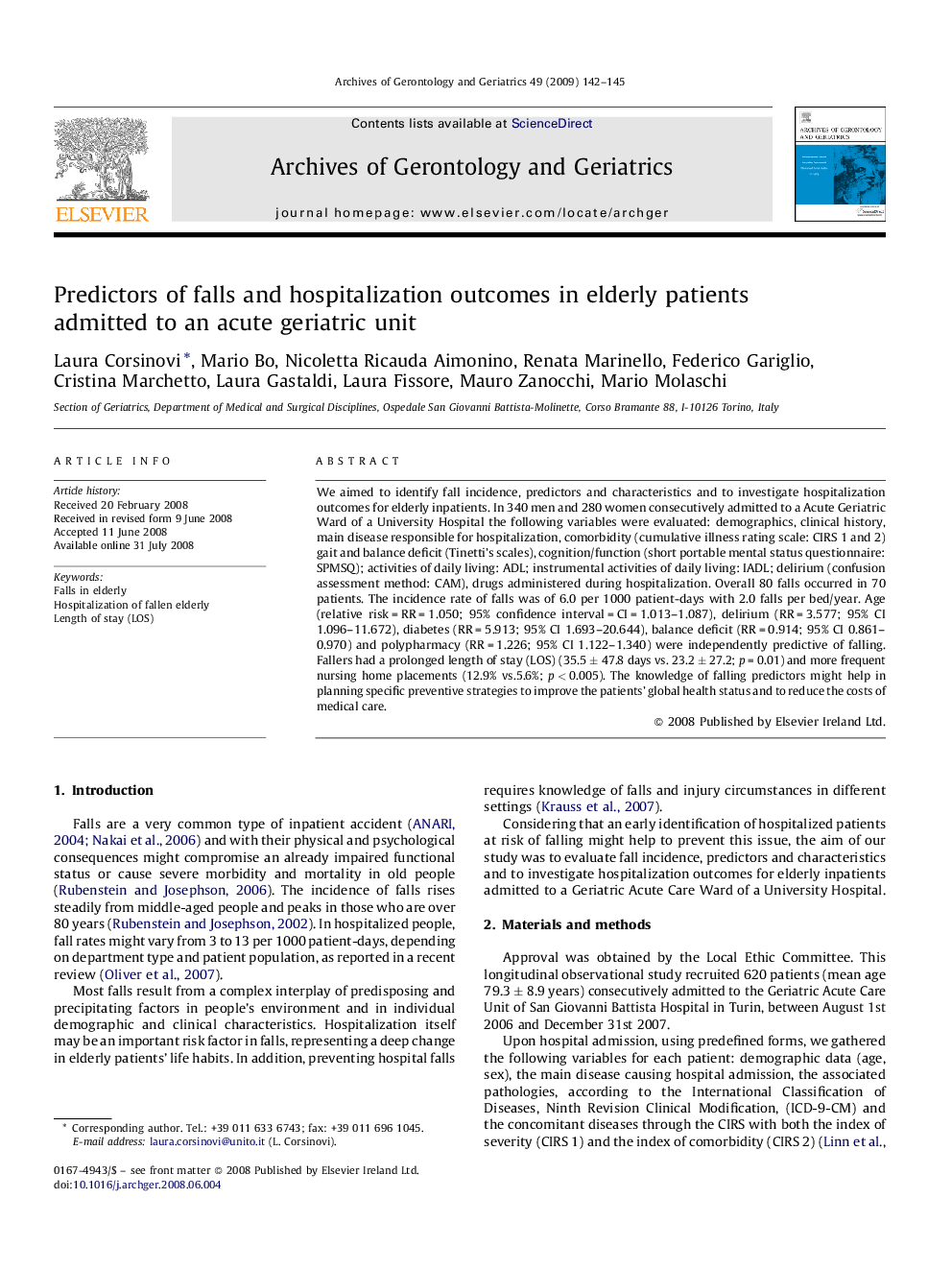| Article ID | Journal | Published Year | Pages | File Type |
|---|---|---|---|---|
| 1904038 | Archives of Gerontology and Geriatrics | 2009 | 4 Pages |
We aimed to identify fall incidence, predictors and characteristics and to investigate hospitalization outcomes for elderly inpatients. In 340 men and 280 women consecutively admitted to a Acute Geriatric Ward of a University Hospital the following variables were evaluated: demographics, clinical history, main disease responsible for hospitalization, comorbidity (cumulative illness rating scale: CIRS 1 and 2) gait and balance deficit (Tinetti's scales), cognition/function (short portable mental status questionnaire: SPMSQ); activities of daily living: ADL; instrumental activities of daily living: IADL; delirium (confusion assessment method: CAM), drugs administered during hospitalization. Overall 80 falls occurred in 70 patients. The incidence rate of falls was of 6.0 per 1000 patient-days with 2.0 falls per bed/year. Age (relative risk = RR = 1.050; 95% confidence interval = CI = 1.013–1.087), delirium (RR = 3.577; 95% CI 1.096–11.672), diabetes (RR = 5.913; 95% CI 1.693–20.644), balance deficit (RR = 0.914; 95% CI 0.861–0.970) and polypharmacy (RR = 1.226; 95% CI 1.122–1.340) were independently predictive of falling. Fallers had a prolonged length of stay (LOS) (35.5 ± 47.8 days vs. 23.2 ± 27.2; p = 0.01) and more frequent nursing home placements (12.9% vs.5.6%; p < 0.005). The knowledge of falling predictors might help in planning specific preventive strategies to improve the patients’ global health status and to reduce the costs of medical care.
